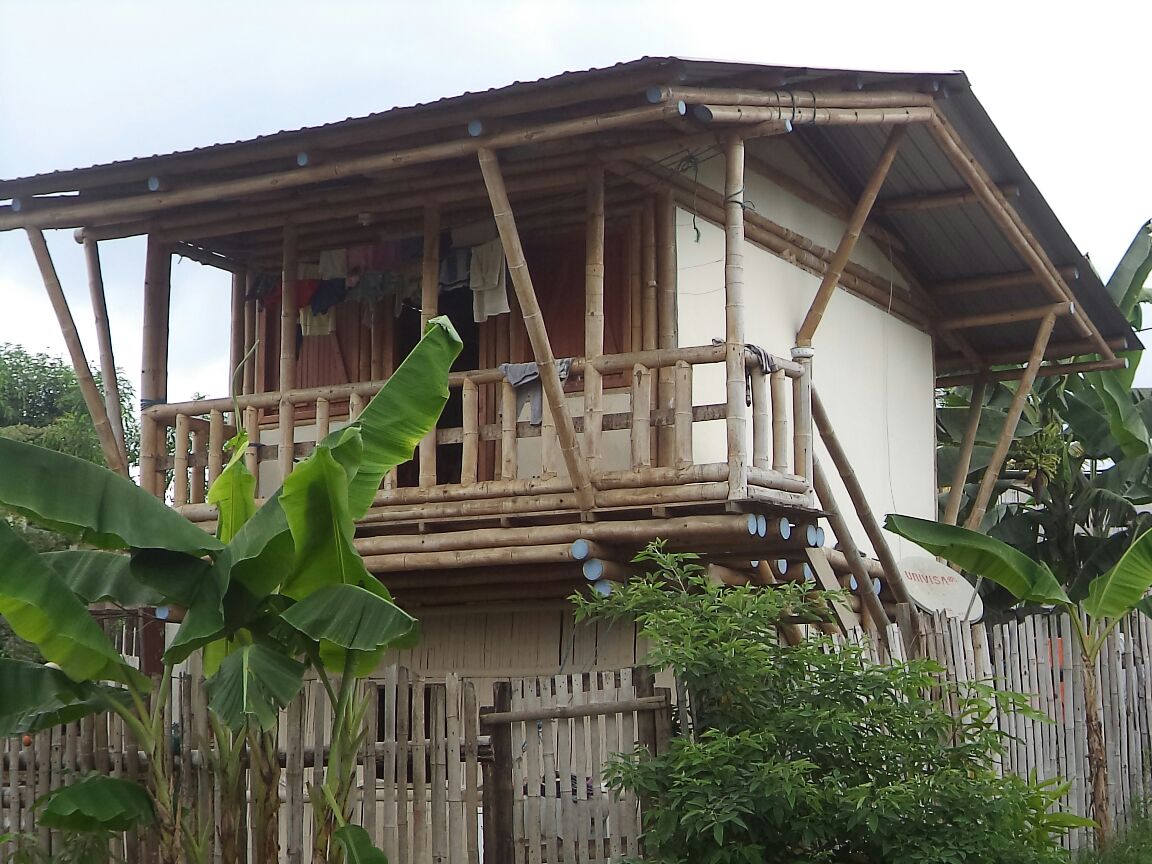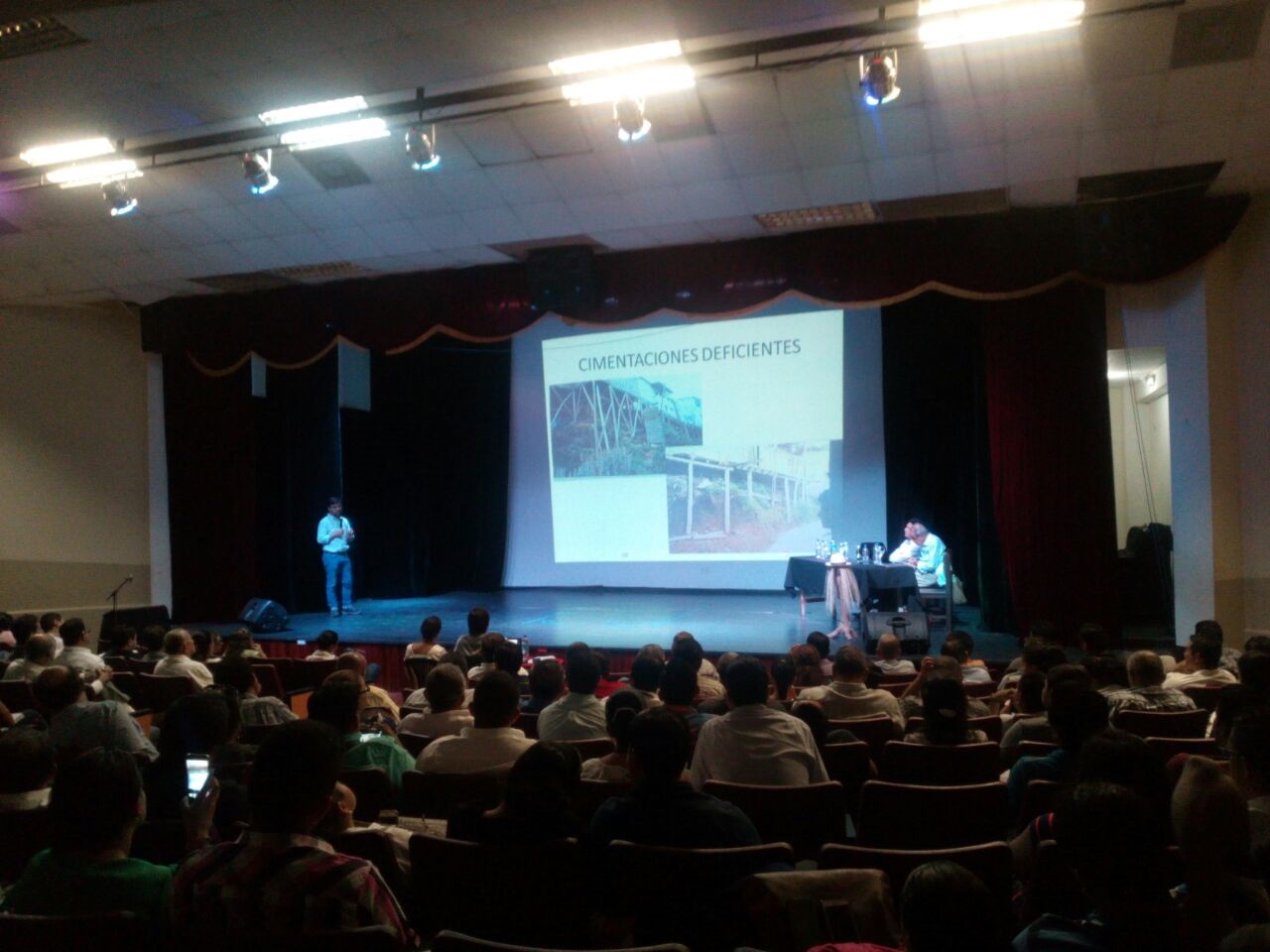My last post was about a bamboo-based earthquake-response in Nepal. Unfortunately, I now have to write about Ecuador.
On April 16th 2016, Ecuador was hit by a massive earthquake measuring 7.8 on the Richter scale. Directly impacting 6 provinces located on the northern coastal area this disaster was responsible for claiming the lives of 660 people. Forcing 7,600 families or around 30,000 people into temporary shelters the earthquake also had a devastating effect on more than 560 schools and 7,000 other buildings. Destroying many roads, it led to the isolation of rural communities from aid.
Utilising its Regional Office for Latin America and the Caribbean (LAC) located in Ecuador, INBAR swung into action. Understanding the gravity of the situation, INBAR immediately deployed its in-country team and network of specialists in bamboo construction to support local partners learn how to incorporate bamboo into post-earthquake planning.
Preliminary reports state that most buildings using bamboo have either been able to withstand the impact or have only been partially damaged. International and local media outlets including New York Times, BBC, CNN, ABC, El Tiempo, El Comercio, El Universo, El Expreso, and El Telegrafo have reported on a number of cases that show the relative performance and strength of Bamboo.
Our local team sent the following to illustrate how bamboo buildings are still standing


While these observations are encouraging, we need scientific knowledge to be able to state without hesitation that bamboo construction survives earthquakes. With the support of local, regional and international partners, INBAR is now coordinating a technical evaluation of the impact the earthquake had on existing bamboo structures and resources. The report aims to inform authorities on how bamboo could be appropriately used in the reconstruction process. The photo below shows bamboo engineers Louis Felipe Lopez and Jorge Moran from Colombia reviewing the state of a bamboo market in the affected area.

In partnership with a number of collaborators, INBAR successfully organised workshops on bamboo reconstruction and regulations for safe homes in Quito and Manta. Based on their prior experience and knowledge in utilising bamboo for alleviating relief efforts in Colombia, Ecuador and Peru experts shared their observations with the participants. The event held on the 12th of May at Quito was attended by 70 people and organised with the support of Mesa Sectorial Bambu Ecuador and the Association of Provincial Governments of Ecuador (CONGOPE). The attendees included people from the Ecuadorian Ministries of Housing, Industry and Productivity, and Agriculture, as well as representatives from provincial governments, universities, and volunteer organisations. The attendees of the event acknowledged the crucial need for Ecuador’s national building code to reinstate bamboo and allow earthquake reconstruction subsidies for bamboo houses. On the the 13th of May, another event was organised in Manta supported by the University Laica Eloy Alfaro of Manabi and was attended by 300 people. The attendees included a number of municipal and provincial government officials from Manta and Manabi who were directly responsible for reconstruction after the earthquake. The participants were determined to promote and encourage the usage of local materials and techniques for reconstruction using local material and techniques such as bamboo and bahareque walling systems. They further resolved to actively encourage the integration of bamboo in the national construction code and future housing policies.

The Bamboo Training and Awareness-raising Seminar in Manta
An email address consultoriodebambu@gmail.com was created by INBAR to assist users in answering technical questions including the optimal utilisation of bamboo, information on providers, prices, and quality. So far, INBAR has answered more than 250 emails. The Virtual Bamboo Desk Support continues to get messages on bamboo usage and other related topics. INBAR has also shared manuals and technical notes that offer information on optimal usage of bamboo and construction with over 600 different groups via emails, print copies and social media.
Collaborating with a number of national platforms, INBAR is working with the Ecuadorian Ministries of Housing, Industry and Productivity, Foreign Affairs, Environment, and Agriculture along with local government authorities to coordinate the reconstruction work. We also participated in several coordination meetings organised by the National Bamboo Roundtable (platform that comprises 70 public and private organisations interested in bamboo in Ecuador). A formal resolution related to bamboo reconstruction was signed by 28 stakeholders in the month of April.
We are now looking at the future, and we have several projects in the pipeline to help build capacity for construction with bamboo. This will involve the construction of demonstration houses, training of local builders and architects, updating the bamboo construction code and bamboo harvesting regulations. We are also talking with the Government about the establishment of a Vocational Training Centre to train young people in bamboo-related employment opportunities.
All of this is coordinated by our Regional Officer for Latin America and the Caribbean in Quito, Ecuador. The LAC Regional Office, established in Ecuador in 2001, represents the 10 INBAR Member States in the Region. The office supports projects to promote use of bamboo – improve value chain; strengthen local capacity; and create local policies that develop harvesting, construction and commercialisation. We also helped to develop national guidelines for bamboo construction in Peru and Colombia (see the picture below), that can now be used to support the activities in Ecuador.

I hope we can help the people of Ecuador to re-build their lives and their houses!

0 comments
Write a comment